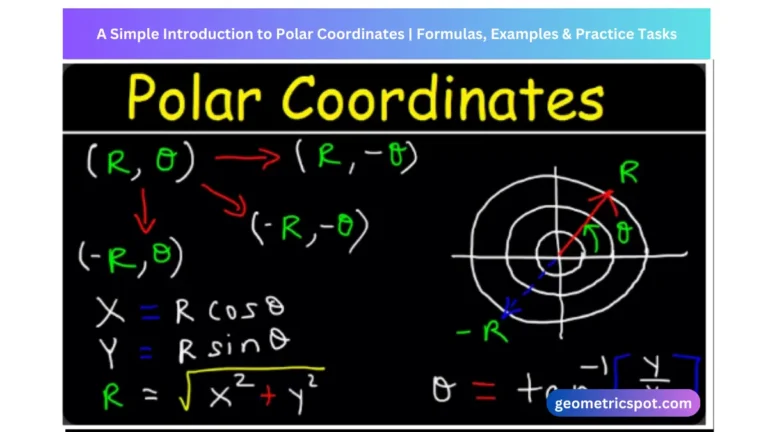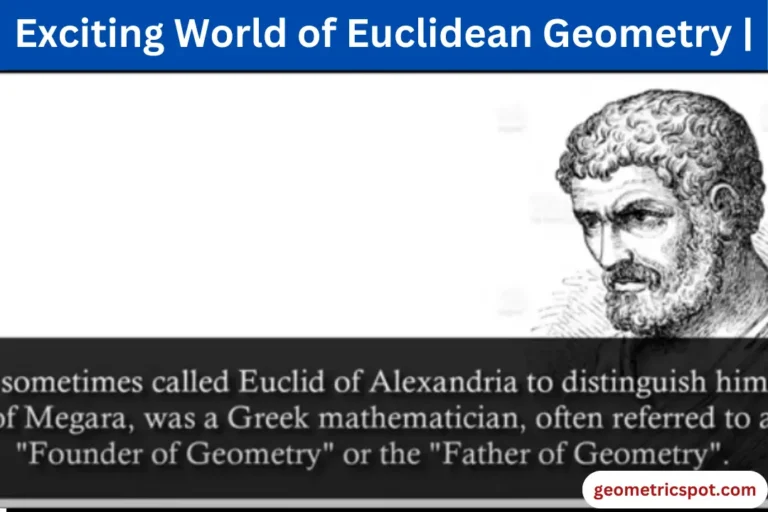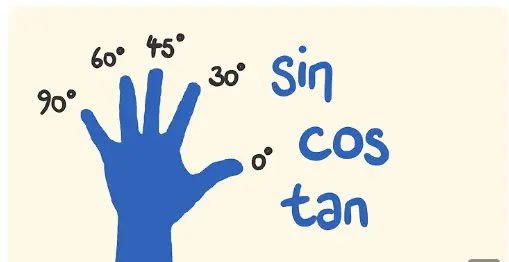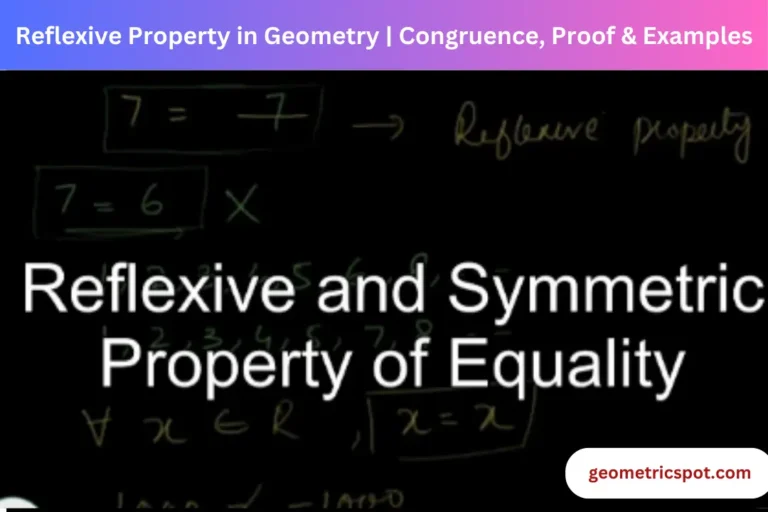How Do Geometry Transformations Work | Types of Transformations
Geometry transformations are fundamental concepts in mathematics, playing a crucial role in various fields such as computer graphics, engineering, and physics.
These transformations involve changing the position, size, or orientation of a shape on a plane. Understanding how these transformations work and the different types available can help in visualizing and solving complex problems.
This article delves into the mechanics of geometric transformations and how do Geometry Transformations Work and Types of Transformations.
What are Geometric Transformations?
Geometric transformations refer to the movement or manipulation of figures in a plane. These transformations change the shape’s position, orientation, size, or even the shape itself, depending on the type of transformation applied.
The original figure before the transformation is known as the pre-image, and the resulting figure after the transformation is called the image.
Basic Principles of Geometric Transformations
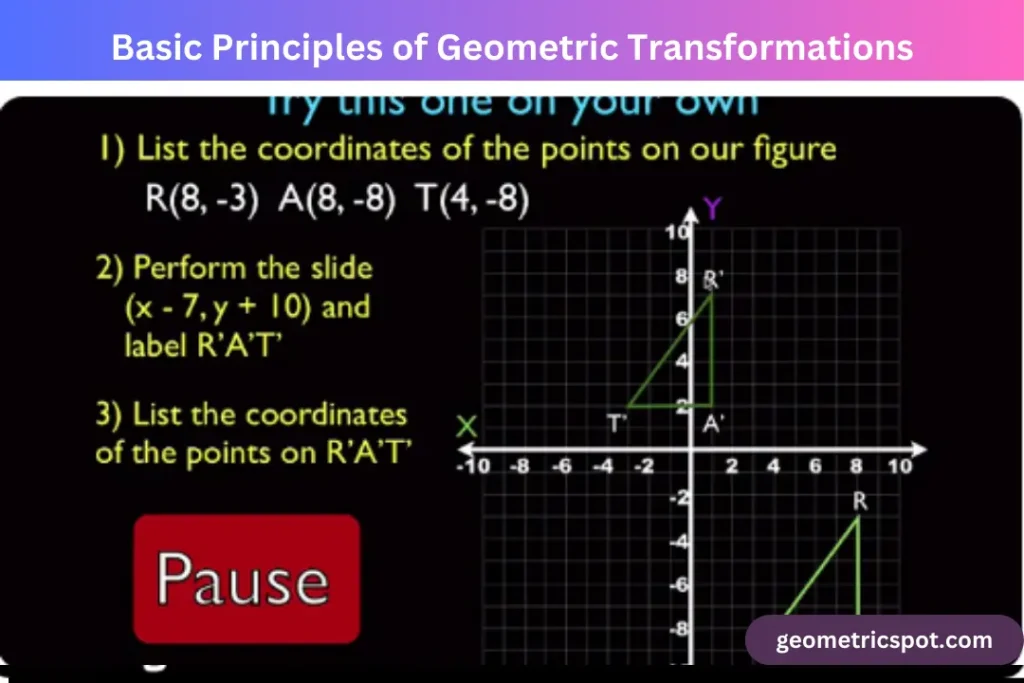
The fundamental principles of geometric transformations involve understanding the coordinate system and how points within this system move. The Cartesian coordinate system, comprising an x-axis (horizontal) and a y-axis (vertical), is typically used.
Each point in the plane is defined by an ordered pair (x,y)(x, y)(x,y). When a transformation is applied, these points shift to new positions, creating a new figure or image.
There are several key properties associated with geometric transformations:
- Distance Preservation: Some transformations maintain the distance between points, ensuring that the shape and size of the figure remain unchanged.
- Angle Preservation: Certain transformations preserve the angles within the figure, maintaining the shape’s original orientation.
- Collinearity: Transformations maintain the collinearity of points, meaning that points that lie on the same line in the pre-image remain on a single line in the image.
- Parallelism: Transformations keep parallel lines parallel in the transformed image.
Types of Geometric Transformations
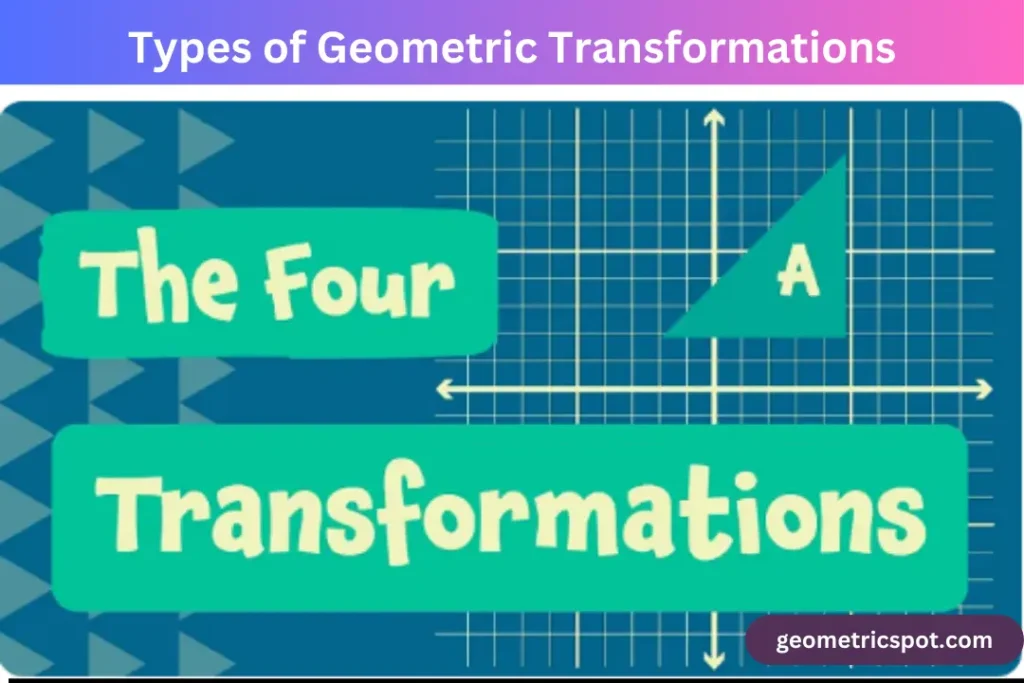
Geometric transformations can be broadly classified into several types: translations, rotations, reflections, dilations, and compositions of these transformations.
Each type has its unique properties and applications.
1. Translation
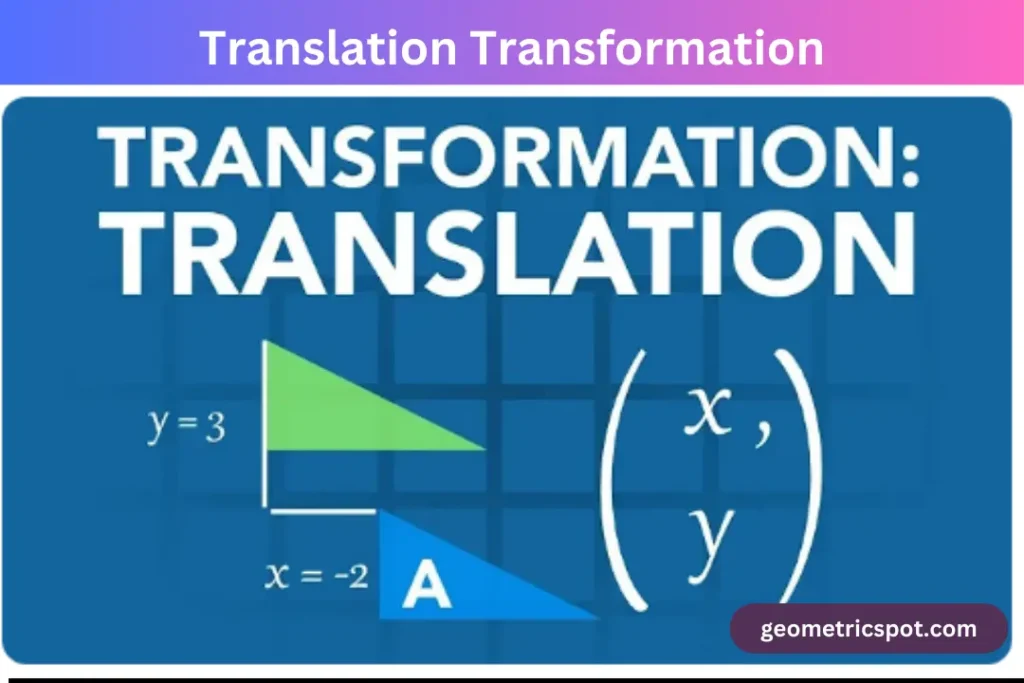
Translation involves moving every point of a figure or shape a constant distance in a specified direction. In simple terms, it’s a “slide” of the shape across the plane. During translation, the shape’s size, orientation, and angles remain unchanged; only its position shifts.
For Example:
For example, if a point AAA with coordinates (x,y)(x, y)(x,y) is translated by (h,k)(h, k)(h,k), the new coordinates of the point A′A’A′ will be (x+h,y+k)(x + h, y + k)(x+h,y+k). This operation is described by the translation vector (h,k)(h, k)(h,k).
Properties of Translation:
- Preserves the shape and size of the figure.
- Maintains parallelism and collinearity.
- Does not alter angles within the shape.
2. Rotation
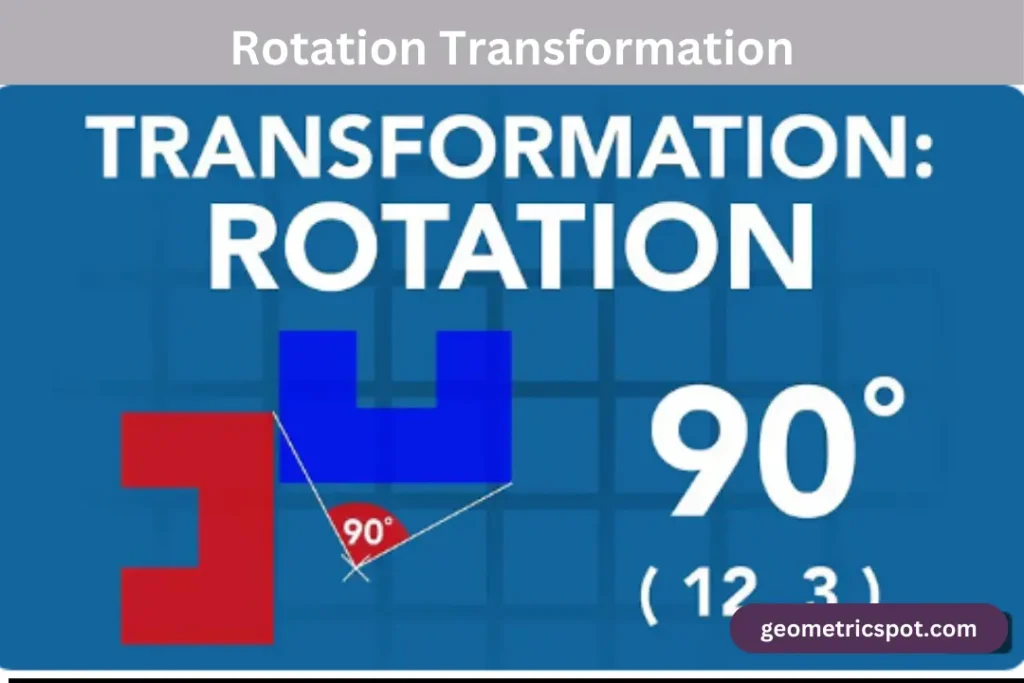
Rotation involves turning a shape around a fixed point known as the center of rotation. The amount of turning is measured in degrees. Rotations can be clockwise or counterclockwise. Unlike translation, rotation changes the orientation of the shape but keeps the size and shape constant.
For Example:
For instance, if a point (x,y)(x, y)(x,y) is rotated around the origin by an angle θ\thetaθ, the new coordinates (x′,y′)(x’, y’)(x′,y′) can be calculated using the formulas: x′=xcosθ−ysinθx’ = x \cos \theta – y \sin \thetax′=xcosθ−ysinθ y′=xsinθ+ycosθy’ = x \sin \theta + y \cos \thetay′=xsinθ+ycosθ
Properties of Rotation:
- Preserves the shape and size of the figure.
- Alters the orientation of the figure.
- Maintains angles within the figure.
3. Reflection
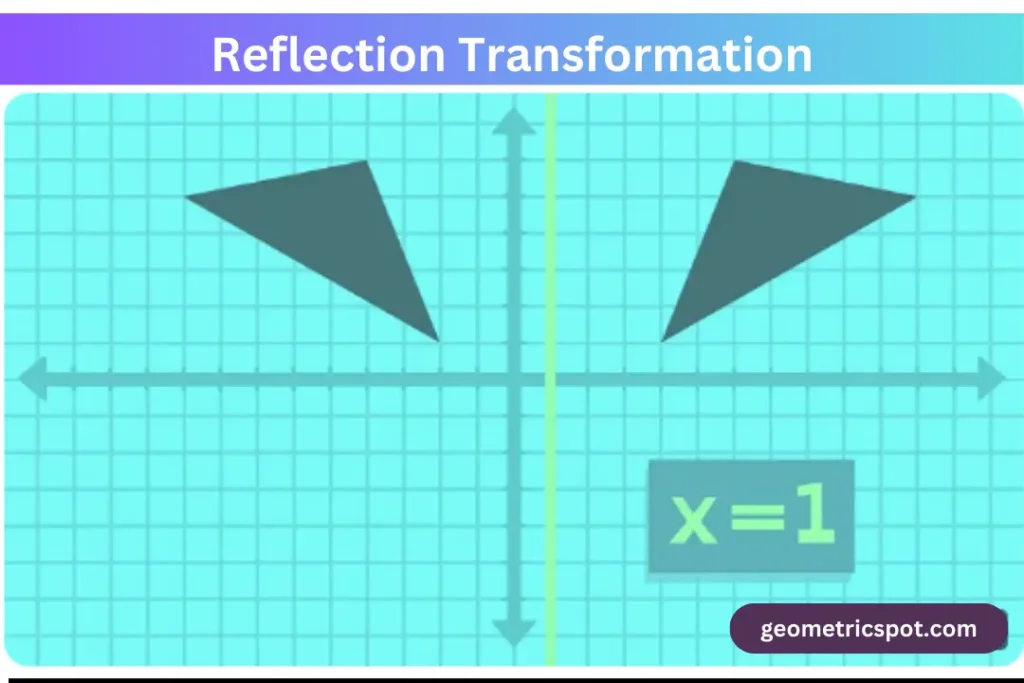
Reflection involves flipping a shape over a specified line called the axis of reflection, creating a mirror image. The reflected shape is congruent to the original shape but oriented differently.
For Example:
If a point (x,y)(x, y)(x,y) is reflected over the y-axis, its new coordinates will be (−x,y)(-x, y)(−x,y). Similarly, reflecting over the x-axis will yield new coordinates (x,−y)(x, -y)(x,−y).
Properties of Reflection:
- Preserves the shape and size of the figure.
- Changes the orientation of the figure.
- Maintains angles and distances.
4. Dilation
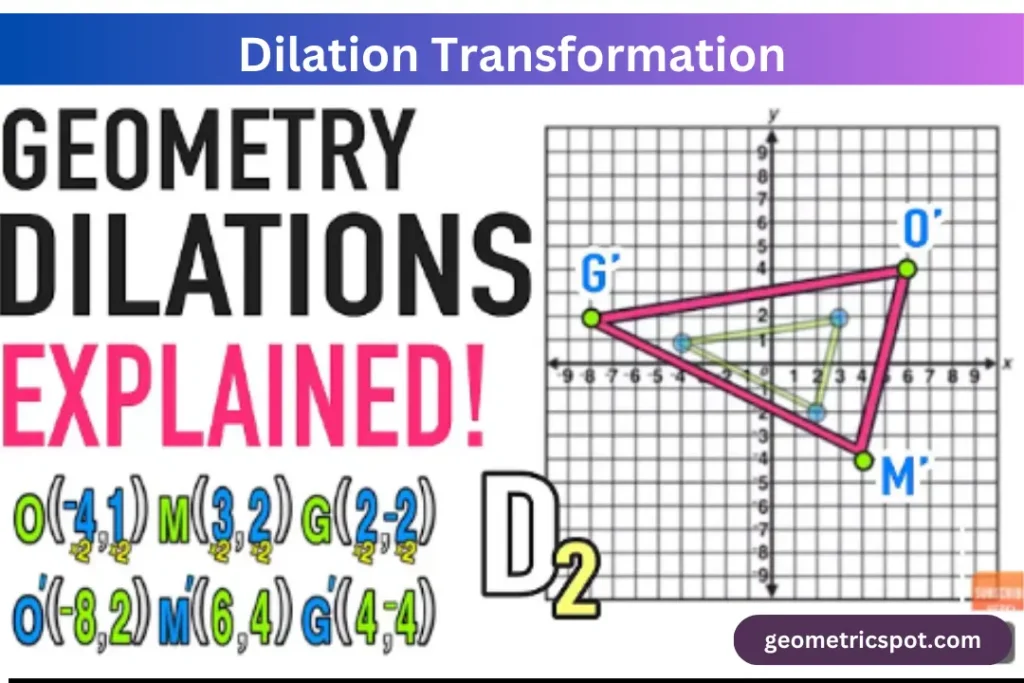
Dilation involves resizing a shape while maintaining its proportions. This transformation requires a center of dilation and a scale factor. The scale factor determines how much the shape will enlarge or reduce. If the scale factor is greater than 1, the shape enlarges; if it is between 0 and 1, the shape reduces.
For Example:
For example, dilating a point (x,y)(x, y)(x,y) by a scale factor kkk from the origin gives new coordinates (kx,ky)(kx, ky)(kx,ky).
Properties of Dilation:
- Alters the size of the figure.
- Maintains the shape and proportions.
- Does not preserve distances, but it preserves angles.
5. Composition of Transformations
Composition of transformations involves applying multiple transformations to a shape. The result depends on the order in which the transformations are applied. For example, translating a shape and then rotating it may yield a different image than rotating it first and then translating it.
Properties of Composition:
- Combines properties of individual transformations.
- The order of operations is crucial.
- Can yield complex results and is useful in various practical applications.
Applications of Geometric Transformations
Geometric transformations have numerous practical applications across different fields:
- Computer Graphics: Transformations are used to manipulate images and models, enabling animations, simulations, and realistic renderings.
- Engineering: Engineers use transformations to model and analyze structures, machines, and systems.
- Physics: In physics, transformations help in understanding motion, forces, and changes in physical systems.
- Robotics: Robots use transformations to navigate and interact with their environments, translating and rotating to achieve desired movements.
- Art and Design: Artists and designers use transformations to create patterns, designs, and perspectives in their work.
Conclusion
Understanding geometric transformations is fundamental in various scientific and practical fields. By grasping how transformations like translations, rotations, reflections, dilations, and compositions work, one can solve complex problems, create innovative designs, and develop efficient solutions in technology and engineering. These transformations not only change the position and orientation of shapes but also open a world of possibilities in visualizing and manipulating geometric figures.
FAQs
1. What are the basic types of geometric transformations?
The basic types of geometric transformations are:
- Translation: Sliding a shape without rotating or flipping it.
- Rotation: Turning a shape around a fixed point.
- Reflection: Flipping a shape over a line to create a mirror image.
- Dilation: Resizing a shape while maintaining its proportions.
2. How do you perform a translation transformation in geometry?
To perform a translation, move every point of a shape a certain distance in a specified direction. This is done by adding the same vector to each point’s coordinates. For example, translating a point (x,y)(x, y)(x,y) by (h,k)(h, k)(h,k) results in a new point (x+h,y+k)(x + h, y + k)(x+h,y+k).
3. What is the difference between rotation and reflection?
- Rotation involves turning a shape around a fixed point by a certain angle, which changes the shape’s orientation but not its size or shape.
- Reflection involves flipping a shape over a specified line, creating a mirror image of the shape, which changes its orientation but keeps the size and shape the same.
4. How is dilation different from other transformations?
Dilation changes the size of a shape while maintaining its proportions. Unlike translations, rotations, and reflections, which preserve the size and shape, dilation either enlarges or reduces the shape based on a scale factor. If the scale factor is greater than 1, the shape enlarges; if it is between 0 and 1, the shape reduces.
5. How can multiple transformations be combined?
Multiple transformations can be combined through a process called composition. The result of applying several transformations depends on the order in which they are applied. For example, translating and then rotating a shape might produce a different result than rotating first and then translating.
6. Can geometric transformations be applied in 3D?
Yes, geometric transformations can be extended to three dimensions (3D). The basic types (translation, rotation, reflection, dilation) apply similarly but consider an additional z-axis. 3D transformations are used in computer graphics, virtual reality, and 3D modeling.

